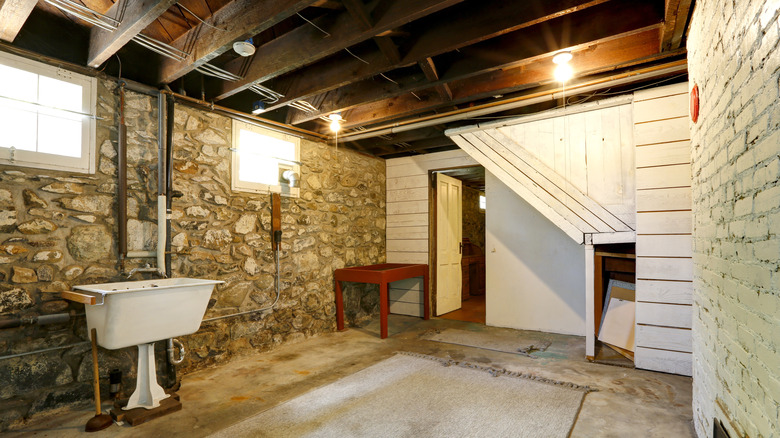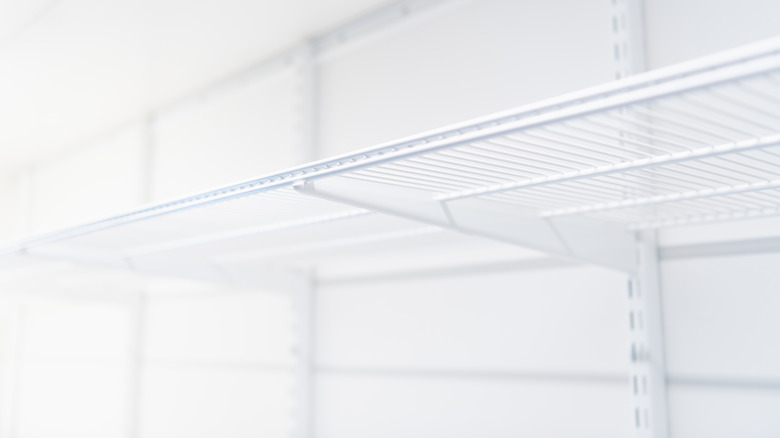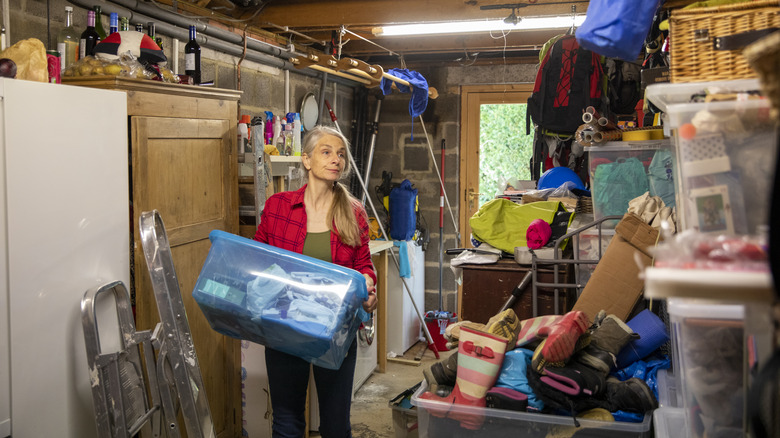Make Use Of This Unused Basement Space For Additional Storage
We may receive a commission on purchases made from links.
In the constant battle against clutter, finding extra storage space at home is always a welcome development. Whether you're looking to add dedicated storage for seldom-used items that you still want to be readily accessible or just need some breathing room for your "stuff," utilizing overlooked areas can be a game-changer. One such space is the area between the overhead joists in the basement. With a little creativity and some basic DIY skills, this often-unused space can become a valuable basement storage solution.
This hidden section of your basement, typically relegated to obscurity, presents an opportunity for you to reclaim valuable real estate you didn't know existed. By harnessing it, you can help alleviate the strain of excess in your crowded closets and overflowing shelves and achieve a sense of order and efficiency. It is also incredibly versatile. Whether you need storage for seasonal decorations, bulky sports equipment, or rarely used household items, this area can accommodate a wide range of belongings with ease.
One way to implement this hack is by using wire shelving. Opt for heavy-duty wire shelving to ensure durability and support for your stored items. Some great options include ClosetMaid's 103100 All-Purpose Wire Shelf Kit (3 feet by 12 inches) priced at $37.77 at Walmart and Rubbermaid's Configurations 26" Shelving Kit (set of two), retailing for $33.89 on Amazon.
Implementing this basement storage hack
To apply this storage hack, start by identifying which part of the space between the overhead joists you intend to use. Avoid using the space above areas where people frequently walk or work, and exercise caution around any pipes, wiring, or other obstructions that may impede installation or pose potential hazards. Measure the available space accurately to determine the dimensions for the wire shelving you'll need.
Get all the materials you need for the installation, including the wire shelving units, brackets, screws, a power drill, a level, a pencil, and a tape measure. Use a pencil to mark the locations where you'll attach the brackets to the basement joists. Space the brackets evenly along the length of the shelving unit to provide adequate support. Use a power drill to pre-drill pilot holes at the marked installation points on the joists. Securely attach the brackets to the basement joists using screws. Make sure the brackets are level and aligned properly before tightening the screws. Then, place the wire shelving unit onto the installed brackets, ensuring it is level and centered between the basement joists. Adjust the positioning as needed to achieve the desired placement.
Once the shelving unit is in position, secure it to the brackets with screws. After installation, test its stability by placing some lightweight items on the shelves. It's important to note that to prevent accidents, you must ensure the shelving units you choose are designed to withstand the weight of your belongings.
Other options to utilize overhead joist space
Aside from basic wire shelving, there are other alternatives worth exploring for this hack, such as adjustable overhead storage racks or bin rail systems. These can be mounted to the ceiling joists and are ideal for storing bulky items in large bins. If you're looking for something more permanent and durable, consider custom-cut plywood or custom-built cabinets or shelving units. These sturdy options can be made to fit the dimensions of the space or fabricated to blend seamlessly with the existing design and provide enclosed storage for a variety of items.
That being said, it's important to remember that basements can be prone to dampness and moisture, which can damage stored items. Use moisture-resistant containers or bins, and consider placing desiccant packs or moisture-absorbing products to help keep items dry. If necessary, use a dehumidifier to reduce humidity levels in your basement. Also, avoid straining or putting too much weight on your shelving units for your safety and to prevent damaging the shelves and the load they carry.
When planning and organizing your basement storage, take it as an opportunity to declutter this part of your home. Donate or discard items that are no longer needed or used to free up more space for storing items that you actually utilize or are essential. Embracing this storage hack will amplify the functionality of your living areas and foster a sense of serenity and orderliness within your home.



